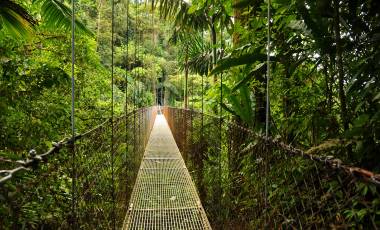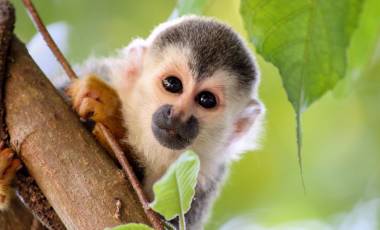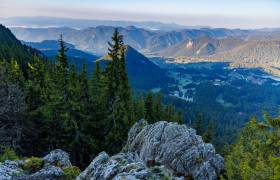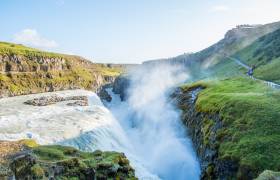By the early 1980s, after years of unchecked logging, the World Economic Forum estimated that two-thirds of Costa Rica’s tree canopies were destroyed, damaging the natural habitat of indigenous creatures. However, thanks to the creation of the National Forestry Commission and essential support and funding from non-profit organisations, like the Rainforest of the Austrians (Regenwald der Osterreicher), the staff at the Esquinas Rainforest Lodge have effectively help to save 14,000 hectares of primary Costa Rican jungle from poachers, loggers and deforestation, and in doing so, have protected the habitat of some of the country’s most endangered species.

[Aerial view of the Piedras Blancas National Park]
When Christopher Columbus came to Costa Rica, he coined it the “Rich Coast” for good reason. Costa Rica holds an astonishing 5% of the world’s flora and fauna within its borders. And in keeping with the celebration of 50 years since Earth Day began, we’ve reached out to Esquinas Rainforest Lodge Manager, Julia Wurth and expert Rainforest Guide, Andrey Acosta, who is currently in lockdown at the lodge, to hear what interesting wildlife you’d expect to see in their rainforests, and what species have returned to the region since their amazing journey to save this spectacular area of primary Costa Rican rainforest began.
Formerly part of the Esquinas zone of the Corcovado National Park, the Piedras Blancas National Park was created and bought by the Rainforest of the Austrians in 1993 in an effort to protect the only remaining lowland tropical rainforest in the Golfo Dulce.
As part of this award-winning environmental project, they also helped fund the construction of the Esquinas Rainforest Lodge in 1994. Since then, the staff and expert wildlife guides have seen noticeable changes when it comes to wildlife returning and growing biodiversity surrounding their eco-friendly lodge.
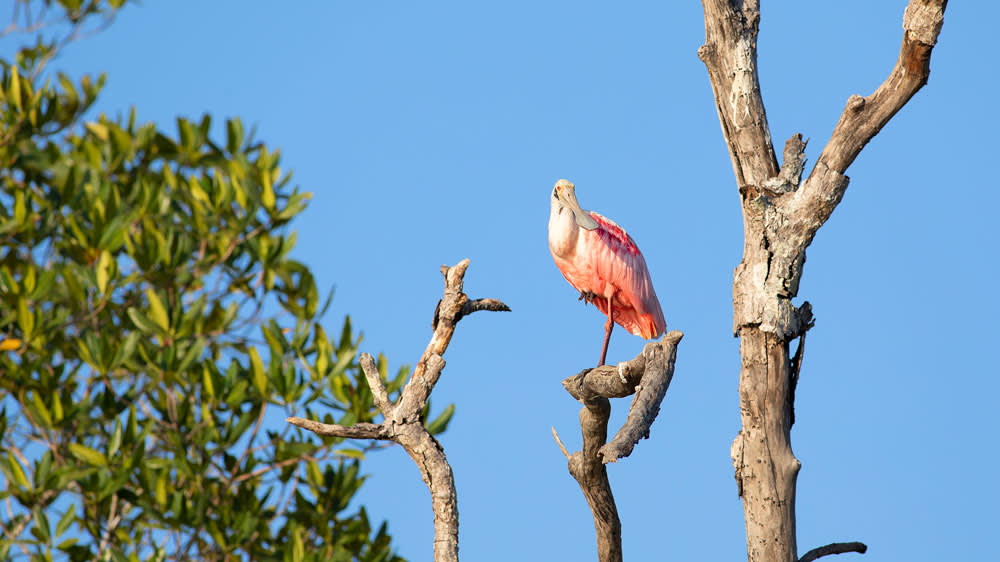
[ Sighting of the Roseate Spoonbill near the Esquinas Rainforest Lodge – Costa Rica’s only pink bird species]
Julia Wurth was quick to comment, “Thanks to the perseverance of the Austrians and our staff to protect this area, we’re excited to see quite a large population of Great Curassows roaming the floors of these tropical rainforests, which was very rare before due to hunting.” Primarily spotted in jungles from eastern Mexico to the northwestern parts of Ecuador, these creatures that some locals affectionately call “the turkeys of Costa Rica” can now be seen tamely wondering around the gardens and grounds of the Esquinas Rainforest Lodge.
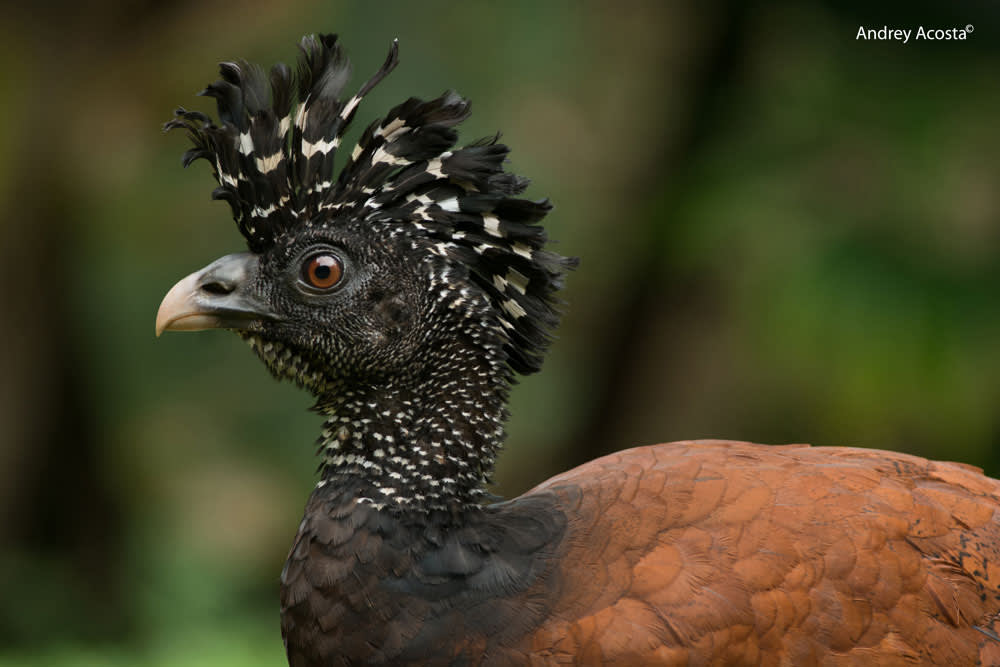
[The Great Curassows are slowly returning to surrounding their rainforests]
She continues, “Aside from the Great Curassows, we’ve noticed a number of Agouties and spotty Pacas returning to the area – one of the most commonly hunted animals in Costa Rica”. We’re told visitors to the lodge have seen a rise in the sightings of musk hog herds, called Collared Peccaries and playful Tayras, (Costa Rica’s equivalent of weasels), swinging from the tree canopies. “It’s great to catch sightings of Scarlet Macaws close to the Lodge, as they would have rarely been seen here a couple of years ago”, Julia mentions.
On your average day, she claims, it’s not uncommon to see the resident Ocelot, (a small wild, native cat with dappled fur) casually passing by their swimming pool in the afternoon. Her most exciting encounters, she explains, were during the last year or so with “Sightings of a Puma and a tapir very close to the Lodge which is a very good sign of nature recovering.”
In the lodge garden, you can often see cheeky white-face capuchin and squirrel monkeys, while hearing the whopping calls of howler monkeys near the Golfo Dulce coast. But, rather surprisingly, you’ll find that bats are among the richest mammal group in the lush greenery of Piedras Blancas National Park.
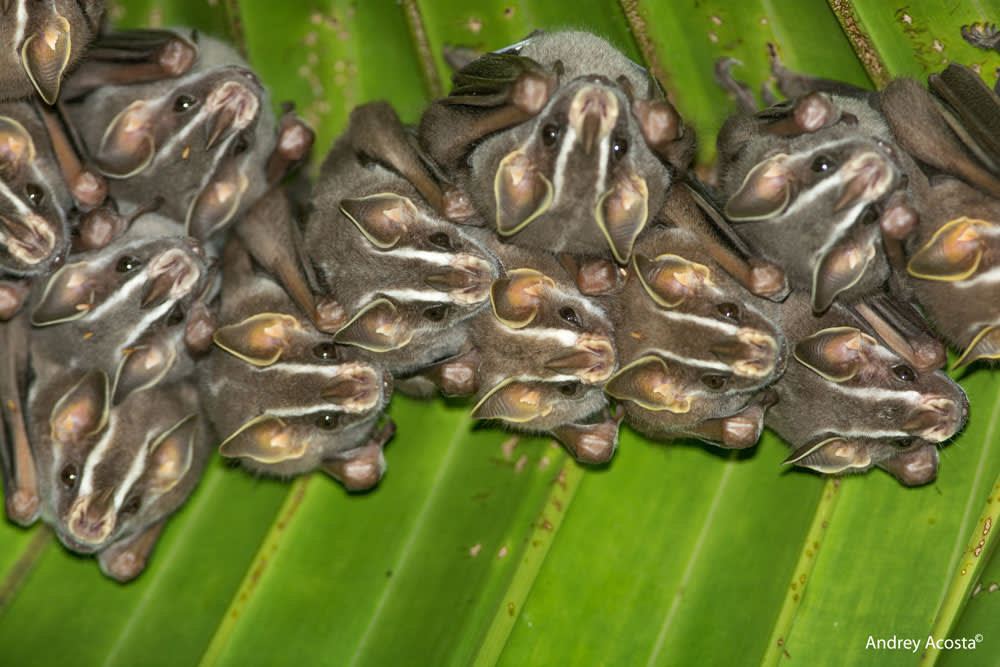
[Tent-making bats, huddling during tropical rainstorms]
With an estimated 53 different types in this rainforest alone, expert Rainforest Guide, Andrey Acosta, particularly likes photographing the adorable tent-making species of bat. Found in the lowland tropical forests of Central and South America, these bats are known for their fleshy, noseleaf faces and white stripes. They got their name, from their curious behaviour of manoeuvring large fan-shaped leaves into tents, as a way of protecting themselves during tropical rains.
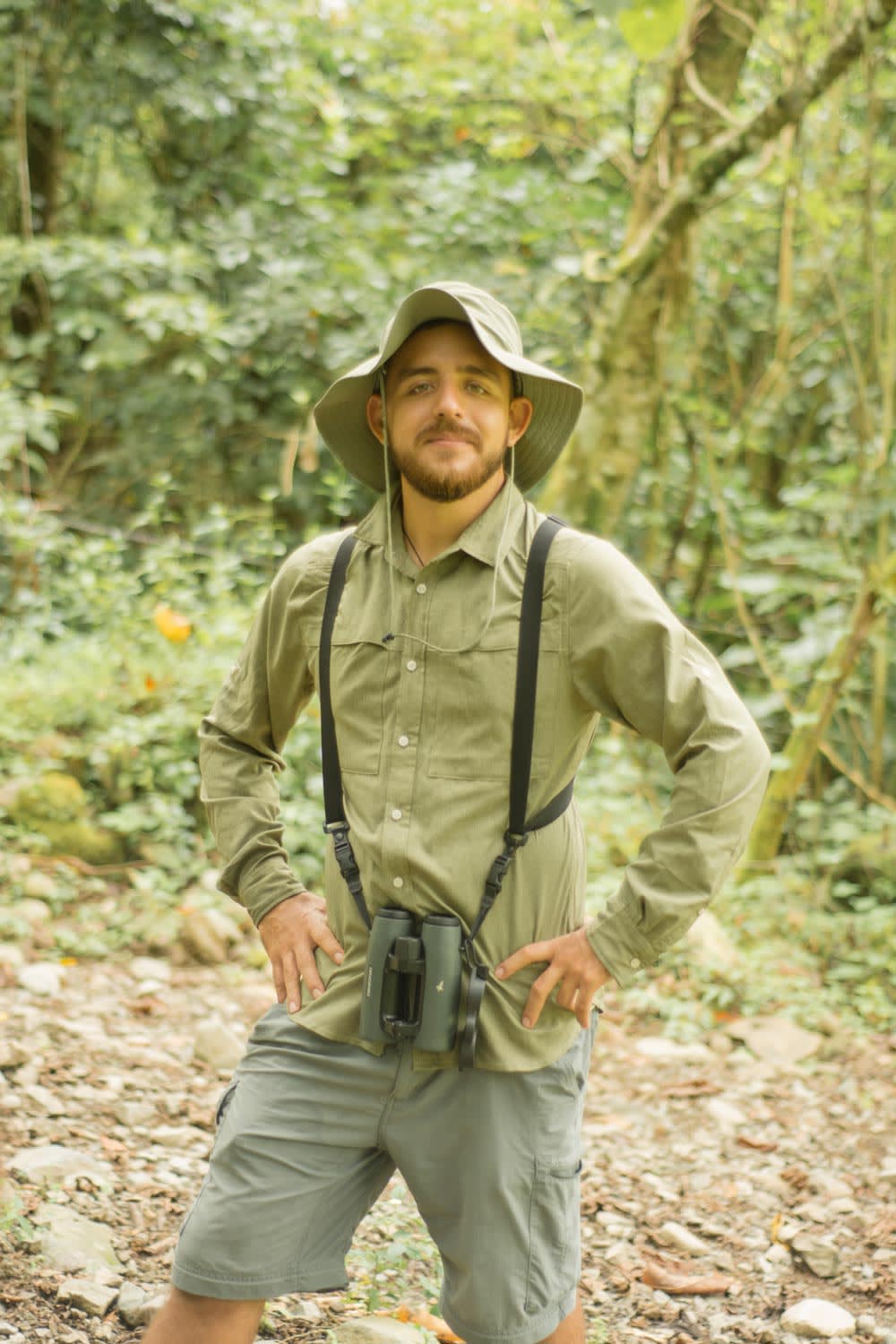
[ Andrey Acosta, Esquinas Rainforest Lodge Wildlife Guide]
Needless to say, we’re all a bit jealous of Andrey, who is currently riding out the lockdown period at the Esquinas Rainforest Lodge. “I don’t honestly think I could have found a better place to spend the quarantine but at this lodge. I feel at home here.” He continues, “Being surrounded only by the sounds of nature with mornings full of songs from violet-headed hummingbirds, the sound of rain pattering on the leaves in the afternoons and lots of frogs chirping at night – things could be worse. We have each other’s company and it gives me time to explore the rainforest.”
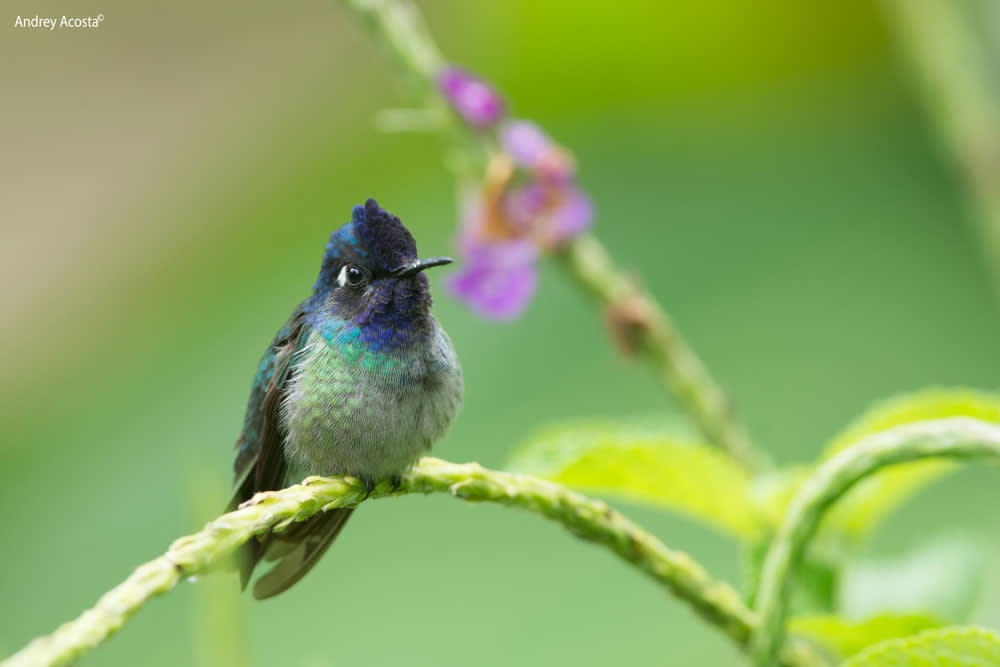
[Violet-headed hummingbird, photographed in Piedras Blancas National Park]
When asked what has happened when it comes to wildlife encounters and growing biodiversity since lockdown began, he explained, “I’ve seen worldwide how animals are visiting places they didn’t use to go before, like streets, city parks and gardens. The same thing is happening in Costa Rica, we’ve watched some videos of pumas and deer walking around urban places and beaches, even the rare manatees were seen and recorded near a big port at the Atlantic side of the country. It’s absolutely amazing.”
To understand this funny phenomenon of animals going beyond their natural boarders to explore, Andrey simply puts it down to the fact that, “Many industries have shut down, there’s less emissions coming out and not a lot people around, which provides great conditions for curious animals who want to explore those new free places.”
Unsurprisingly, when asked what Andrey’s favourite animal to see around the Esquinas Rainforest, he explained, “The Rainforest is very rich, so rich that it’s difficult for me to pick just one. I love every creature from the smallest insect to the biggest predator, but birds will have always a special place in my heart.” However, he continues, “If I had to choose, I would choose the marvellous Black-cheeked Ant-Tanager, an endemic bird restricted to the Southern Pacific of Costa Rica. This bird is really unique, beautiful and has a nice melodic voice. It is one of the targets of many birdwatchers who come to Costa Rica and the Esquinas Rainforest Lodge is one of the best places to see it and with some patience, you’re sure to get some great photos to take home with you.”
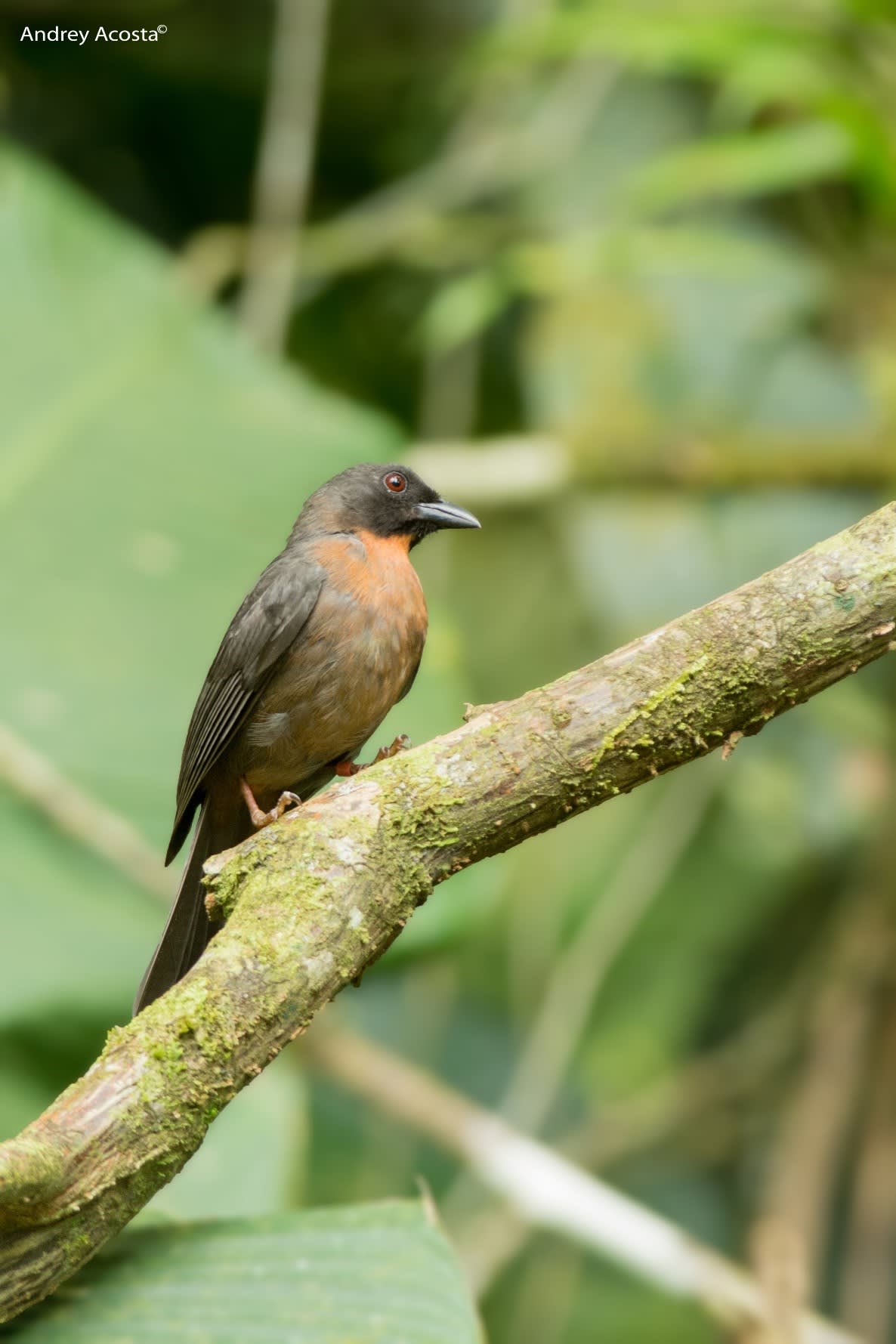
[ Sighting of Black-cheeked Ant-Tanager, endemic to the Osa Penninsula]
As we leave Andrey to get back to doing what he does best, exploring Costa Rica’s rainforest floors, he leaves us with this profound message, “During these uncertain times of quarantine, this gives the world a chance to truly understand just how much human activity affects animals’ lives. This could be a good opportunity to learn how to live with other species and make the changes we need to not only ensure their survival in the future, but how our actions from this moment onwards can help them thrive.”
Stay at the Esquinas Rainforest Lodge on our Discover Costa Rica Exodus trip.


